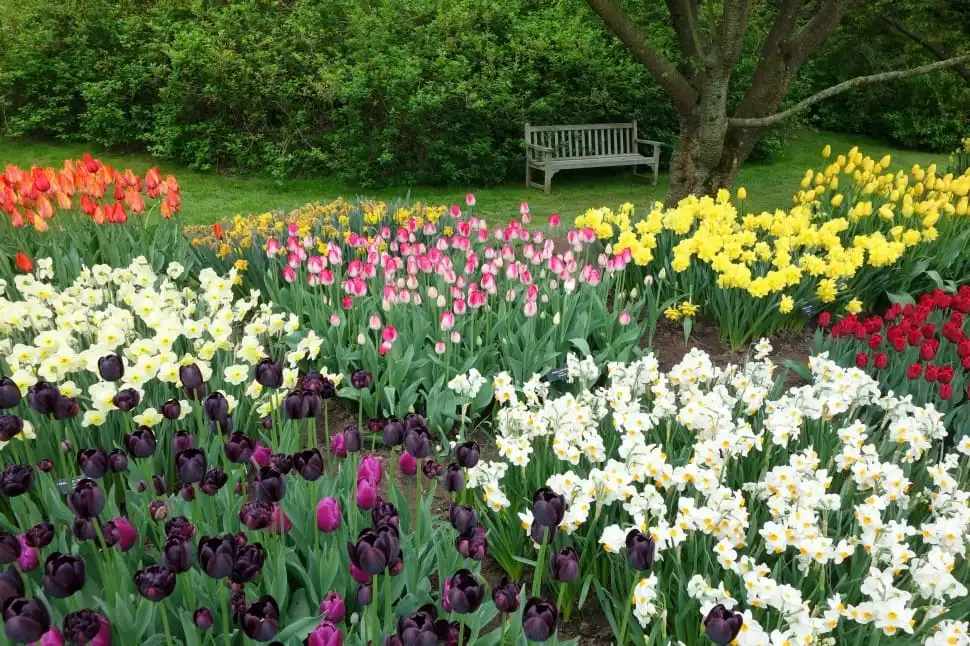Tulips are one of the most popular spring flowers, known for their vibrant colors and elegant beauty. Planting tulips in your garden is a great way to add a splash of color and vibrancy to your outdoor space. However, planting tulips can be a bit challenging, especially for those who are new to gardening. In this article, we will provide you with some tips for planting tulips in your garden to ensure that you have a successful and beautiful tulip garden.
Choosing the Right Location for Your Tulip Garden
The first step in planting tulips is choosing the right location for your garden. Tulips require a location that receives at least six hours of sunlight each day. It’s also important to choose a location that has well-draining soil. If your soil is heavy and clay-like, you will need to amend it with sand, peat moss, or compost to improve drainage.
Preparing the Soil
Before planting tulips, it’s important to prepare the soil properly. You can do this by removing any weeds or grass from the area and then loosening the soil with a garden fork or tiller. Next, add some organic matter such as compost, well-rotted manure, or leaf mold to the soil to improve its texture and fertility. Finally, rake the soil to create a smooth and level surface.
Choosing the Right Tulip Bulbs
When choosing tulip bulbs, it’s important to select bulbs that are large, firm, and free from any signs of mold or damage. It’s also a good idea to choose bulbs that are specific to your planting zone, as different varieties of tulips perform better in different zones.
Planting the Tulip Bulbs
To plant tulip bulbs, start by digging a hole that is two to three times deeper than the bulb’s height. Place the bulb in the hole with the pointed end facing up and the flat end facing down. Then, cover the bulb with soil and press down firmly to remove any air pockets.
Caring for Your Tulip Garden
Once your tulips are planted, it’s important to care for them properly to ensure that they grow and bloom to their full potential. This includes watering them regularly, but not too much as they don’t like to be in waterlogged soil. You should also fertilize your tulips with a balanced fertilizer in the spring and fall.
Dealing with Common Tulip Problems
While tulips are generally easy to care for, they can sometimes be affected by pests and diseases such as aphids, slugs, and botrytis. If you notice any signs of these problems, it’s important to address them promptly to prevent them from spreading and damaging your tulip garden.
Enjoying Your Tulip Garden
Once your tulips have bloomed, it’s important to enjoy their beauty and fragrance. You can cut tulips for indoor arrangements or leave them in the garden to enjoy. Remember to deadhead your tulips by removing the spent flowers to encourage the bulbs to produce more flowers the following year.
Conclusion
Planting tulips in your garden can be a fun and rewarding experience, but it’s important to follow the right steps to ensure that your tulips grow and bloom to their full potential. By choosing the right location, preparing the soil, choosing the right bulbs, planting them correctly, caring for your tulip garden, dealing with common problems, and enjoying your tulip garden, you can create a beautiful and vibrant outdoor space that will bring joy and delight to you and your family.
FAQs
- When should I plant tulips?
- Ans: Tulips should be planted in the fall, usually from September to December depending on the climate zone.
- How deep should I plant tulip bulbs?
- Ans: Tulip bulbs should be planted two to three times deeper than their height.
- Can I plant tulips in pots?
- Ans: Yes, tulips can be planted in pots as long as the pot is at least 6 inches deep and wide and has drainage holes.
- How often should I water my tulips?
- Ans: Tulips should be watered regularly, but not too much as they don’t like to be in waterlogged soil. Water them deeply once a week and adjust as necessary depending on weather conditions.
- How can I prevent tulip bulbs from being eaten by animals?
- Ans: You can prevent animals from eating your tulip bulbs by covering them with chicken wire or planting them with repellent plants such as alliums or daffodils.
